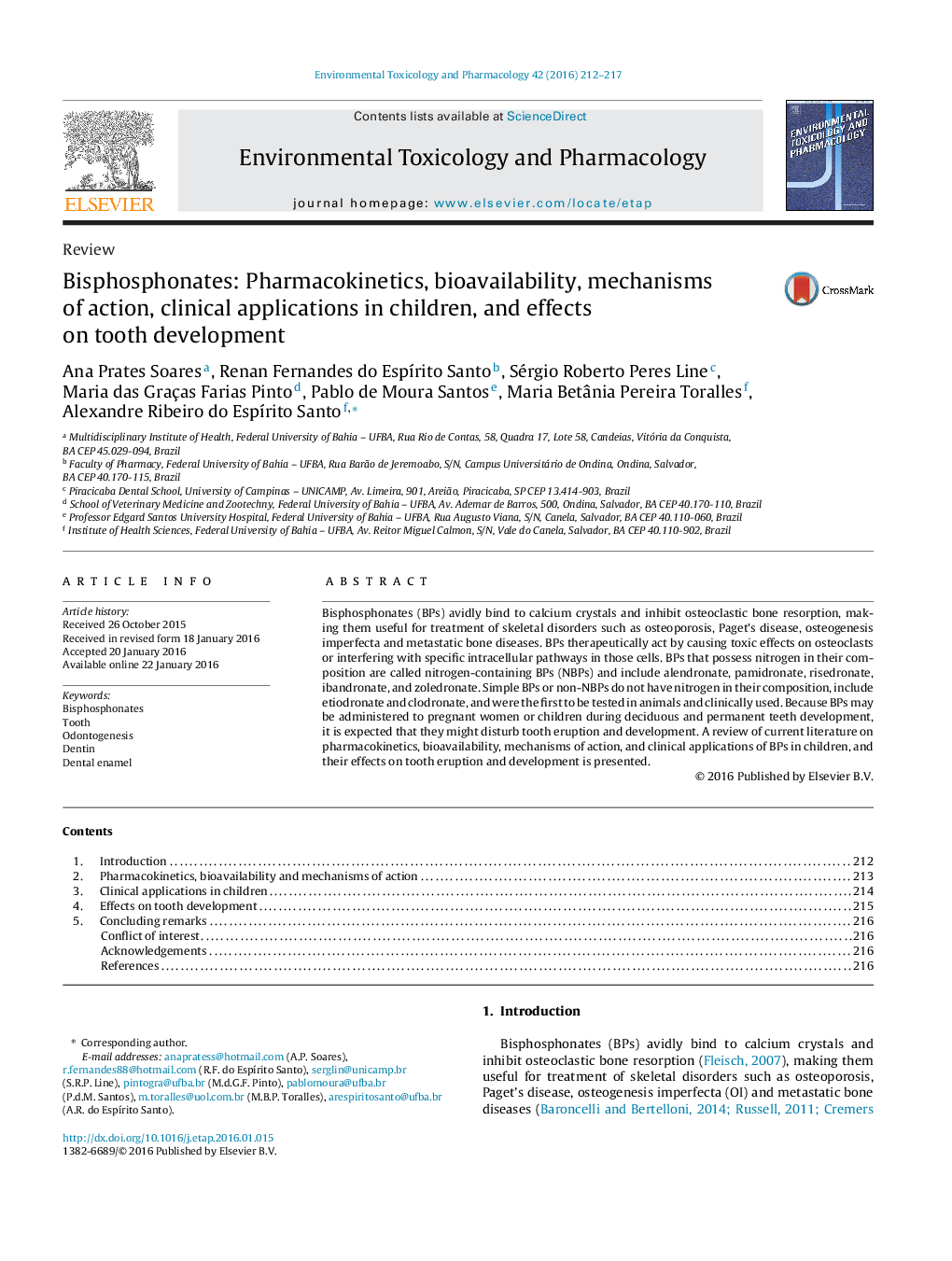| کد مقاله | کد نشریه | سال انتشار | مقاله انگلیسی | نسخه تمام متن |
|---|---|---|---|---|
| 5848665 | 1561702 | 2016 | 6 صفحه PDF | دانلود رایگان |
Bisphosphonates (BPs) avidly bind to calcium crystals and inhibit osteoclastic bone resorption, making them useful for treatment of skeletal disorders such as osteoporosis, Paget's disease, osteogenesis imperfecta and metastatic bone diseases. BPs therapeutically act by causing toxic effects on osteoclasts or interfering with specific intracellular pathways in those cells. BPs that possess nitrogen in their composition are called nitrogen-containing BPs (NBPs) and include alendronate, pamidronate, risedronate, ibandronate, and zoledronate. Simple BPs or non-NBPs do not have nitrogen in their composition, include etiodronate and clodronate, and were the first to be tested in animals and clinically used. Because BPs may be administered to pregnant women or children during deciduous and permanent teeth development, it is expected that they might disturb tooth eruption and development. A review of current literature on pharmacokinetics, bioavailability, mechanisms of action, and clinical applications of BPs in children, and their effects on tooth eruption and development is presented.
Journal: Environmental Toxicology and Pharmacology - Volume 42, March 2016, Pages 212-217
